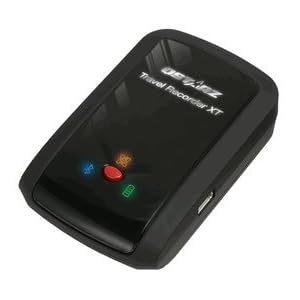- Joined
- Jul 22, 2006
- Messages
- 5,539
After spending many hours in the past week dragging photos onto the map in Lightroom 4, I decided to look into a GPS option. For the first time, I can say I've found something to be disappointed about with regard to the decision I made many years ago to go with Canon rather than Nikon. While there appear to be many GPS options for Nikon DSLRs in all price ranges, direct connection of a GPS to Canon DSLRs only seems to be possible with their top-of-the-line 1D X, with support for 5D Mark III and 7D "coming soon" in yet-to-be-released firmware upgrades. As a 60D owner, I guess I'm forced to go the route of GPS logging followed by syncing in post.
I do have an Android-based smart phone, and I understand there are apps I could download to allow me to use it to perform this function. (This is what was recommended in the Lightroom training video I watched on Adobe's YouTube site.) However, I already have issues with my phone dying before the end of a long Disney day, so I really don't want to run an app that's going to be using the GPS radio constantly. I'd much rather spend a little money and have a dedicated device I can attach to the camera. (I'll probably put it in one of the "Joey" pouches on my Black Rapid strap.)
Web searches aren't getting me very far in finding the right device -- I'm finding a bunch of piecemeal info rather than any kind of buying guide that applies to my situation. (BTW, who knew there was such a large market for spying on where your kids/spouse drive their car?! There are even GPS jamming devices if you are that kid/spouse. Brother!)
From what I've read so far, here are the features I think I'm looking for:
Does anyone use a GPS Logger? Any advice or product recommendations would be appreciated.
I do have an Android-based smart phone, and I understand there are apps I could download to allow me to use it to perform this function. (This is what was recommended in the Lightroom training video I watched on Adobe's YouTube site.) However, I already have issues with my phone dying before the end of a long Disney day, so I really don't want to run an app that's going to be using the GPS radio constantly. I'd much rather spend a little money and have a dedicated device I can attach to the camera. (I'll probably put it in one of the "Joey" pouches on my Black Rapid strap.)
Web searches aren't getting me very far in finding the right device -- I'm finding a bunch of piecemeal info rather than any kind of buying guide that applies to my situation. (BTW, who knew there was such a large market for spying on where your kids/spouse drive their car?! There are even GPS jamming devices if you are that kid/spouse. Brother!)
From what I've read so far, here are the features I think I'm looking for:
- Consistently accurate and reliable GPS coordinates
- Small enough to fit in a "Joey" pouch, so not bigger than an iPhone
- Set it and forget it. I want a simple way to turn it on when I leave the hotel room, and off when I return.
- Direct USB connection to the laptop would be nice, rather than having to swap out a memory card.
- Probably wouldn't use bluetooth, as my WDW laptop is too old to have it. I could install a dongle if a device that's right for me in every other aspect only uses bluetooth
- No klunky serial port interfaces or mock serial port interfaces.
- I'd really prefer a device that attaches to the computer as a disk drive
- Creates a GPX file directly.
- I'll be using with Lightroom 4, and would rather not have the extra step of converting a KML file to GPX.
- If such a thing exists, a device that plugs in to USB, looks like a disk drive to the computer, and already has the GPX file on it would be perfect!
- Would rather not have a device that requires a special software package to create the files
- Definitely don't want a device that uses software that actually tries to edit the exif data in photos directly. (I shoot in RAW, so I don't know that this would even be an option.) I want Lightroom to do the syncing.
- AA batteries would be nice, as I could use the Eneloops I already have in the camera bag for the speedlight, and not have yet another charger to deal with
- Storage and battery capacity to log for 12-18 hours
- Would like to keep the purchase under $150 if possible
- LEDs, displays, or the ability to use the device as a GPS or compass is not important to me.
Does anyone use a GPS Logger? Any advice or product recommendations would be appreciated.
